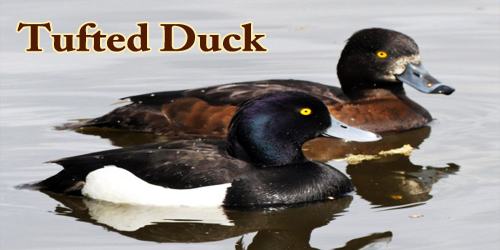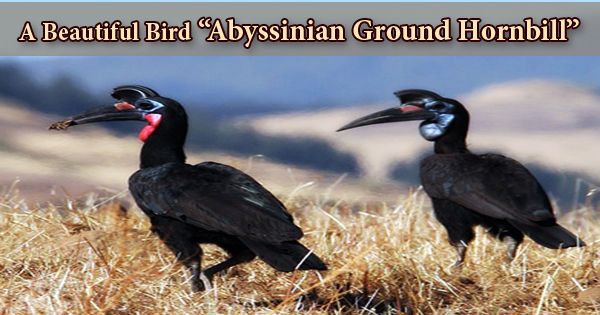The tufted duck (Aythya fuligula) is a small diving duck found in northern Eurasia. Adult males are all black in color except for white flanks and a blue-grey bill with gold-yellow eyes, along with a thin crest on the back of their heads. The scientific name is derived from Ancient Greek aithuia an unidentified seabird mentioned by authors including Hesychius and Aristotle, and Latin, fuligo “soot” and gula “throat”. They have an obvious head tuft that gives these birds their name. Adult females are brown with paler flanks and are more easily confused with other diving ducks. In-flight Tufted ducks show a white stripe across the back of the wing. During winter their crests are shorted and their plumage is brown or buff. Tufted ducks nest in pairs or loose groups with nests near water about 10 meters apart. Females build a bowl-shaped nest on the ground from grass and feathers and lined with dow and vegetation. Tufted ducks lay 8-10 olive-grey eggs which the female incubates alone for 26-28 days. The ducklings fledge about 45 days after hatching. These ducks are migratory in most of their range and overwinter in the milder south and west of Europe, Africa, Middle-East, Southern Asia, and all year in most of the United Kingdom. Tufted ducks breed close to marshes and lakes with plenty of vegetation to conceal the nest. They are also found on coastal lagoons, shorelines, estuaries, sheltered ponds, slow-flowing rivers, tidal bays, or freshwater wetlands. The tufted duck is one of the species to which the Agreement on the Conservation of African-Eurasian Migratory Waterbirds (AEWA) applies.
Tufted ducks are social birds and often form large flocks on open water in winter. They are highly aquatic and spend most of their life in the water. It is believed to have expanded its traditional range with the increased availability of open water due to gravel extraction, and the spread of freshwater mussels, a favorite food. These ducks are migratory in most of their range and overwinter in the milder south and west of Europe, southern Asia, and all year in the British Isles. One individual has been reported as far south as Melbourne, Australia. They form large flocks on open water in winter. Tufted ducks eat mainly plant matter such as roots, seeds, and buds of aquatic plants. They will also eat molluscs, crayfish, snails, crustaceans, and aquatic insects as well occasionally small fish and amphibians. They also feed on roots, seeds, and buds of aquatic plants. Tufted ducks communicate with each other vocally. The females’ call is a harsh, growling “karr”, mostly given in flight. The males are mostly silent but they make whistles during courtship based on a simple “wit-oo”. Tufted ducks feed on many aquatic invertebrates, thus controlling their populations. In turn, these birds serve an important food source for local predators.
















